History of SSA 1993-2000
|
his chapter describes the history leading to the Social Security Administration (SSA) as an Independent Agency and the steps the Agency took to assume its new duties, including the selection of strong and capable leadership. The establishment of SSA as an Independent Agency may be the most significant development during Commissioners Chater and Apfel’s time in office. It enabled the Agency to (1) improve program management, by taking a more active role in addressing its major program challenges, (2) be more accountable to the public, (3) be more responsive to the Congress, and (4) provide stable executive leadership. The highlights of SSA’s major accomplishments under Commissioners Chater and Apfel are discussed. The Early Years
ocial Security began as an Independent Agency when the Social Security Act of 1935 established a Social Security Board (Board) comprised of three members appointed by the President. [1] The chairman reported directly to the President. The original members were John G. Winant, Chairman; Arthur J. Altmeyer; and Vincent M. Miles. Arthur Altmeyer became the Board’s second permanent chairman in 1937, shortly after Chairman Winant’s resignation. Beginning in early 1937, President Franklin D. Roosevelt sent to Congress a series of messages and proposals regarding reorganization of the Executive Branch. He wanted to reduce the number of agencies reporting to him. The Reorganization Act of 1939 authorized the President to devise a plan to reorganize the Executive Branch. The President’s Reorganization Plan No. 1 created the Federal Security Agency as a new sub-cabinet agency and located the Board within it. As a result, the Board lost its status as an Independent Agency, no longer reporting directly to the President. Under the President’s Reorganization Plan No. 2, the Board was abolished in 1946 and replaced by SSA. Arthur Altmeyer, who had been chairman of the Board, became the Commissioner for Social Security. In 1953, President Dwight D. Eisenhower abolished the Federal Security Agency and created the Department of Health, Education and Welfare (HEW). SSA was made part of this new cabinet agency. The Department of Health and Human Services (HHS) replaced HEW in 1980 when the Department of Education was created as a new cabinet-level agency.
The Independent Agency Process
roposals in the Congress to make SSA an Independent Agency can be traced to the early 1970s. After implementation of the Unified Federal Budget in Fiscal Year 1969, which included operations of the Social Security Trust Funds, the budget submissions of the Nixon, Ford and Carter Administrations included proposals for cutbacks in Social Security. These factors led some members of Congress to conclude that Social Security was being used for partisan political purposes, and that making SSA an Independent Agency and taking the trust funds out of the Federal Budget would deal with the issue. During the period 1974-1982, more than 20 bills making SSA an Independent Agency were introduced in the Congress. A 1974 Senate bill sponsored by Special Committee on Aging Chairman, Frank Church, had 51 co-sponsors. In 1981, the debate in the Congress about the desirability of returning SSA to independent agency status became more serious due primarily to two factors. The first was the release in March 1981 of the Report of the National Commission on Social Security mandated by P.L. 95-216 (the Social Security Amendments of 1977), which recommended that SSA be made an independent agency. The Commission recommended an independent agency to be called the Social Security Board, which would administer the Old Age, Survivors, and Disability programs, the SSI program, and the Medicare and Medicaid programs. The second, and probably more important factor, was the release by HHS Secretary Richard Schweiker, in May 1981, of a package of reform proposals that would “keep the system from going broke, protect the basic benefit structure, and reduce the tax burden of American workers.” The package was not generally well received and was characterized by many in and outside of Congress as reducing the budget deficit, and financing the defense buildup through cuts in Social Security. In reaction to the controversy about the Administration’s Social Security reform proposals, President Reagan, by executive order, established the bipartisan National Commission on Social Security Reform. The Commission, headed by Alan Greenspan, reported to the President and the Congress on January 20, 1983, recommending a far-reaching package of proposals intended to ensure the solvency of Social Security. The Commission’s report also included a statement that a majority of its members believe “that it would be logical to have the Social Security Administration be a separate independent agency…and recommends that a study should be made of the feasibility of this.” P.L 98-21, the Social Security Amendments of 1983, which enacted substantially all of the Commission’s recommendations included a provision for the chairmen of the Ways and Means and Finance Committees to appoint a three-person panel to a study of establishing SSA as an independent agency. The legislation did not provide for a study of whether SSA should be independent, but rather, it provided for a study of the issues related to how SSA would be made independent. The three-member panel that conducted the study was headed by Elmer Staats, former Director of the General Accounting Office. Other panel members were Arthur E. Hess, former Deputy Commissioner of Social Security, and Martha Derthick, a noted academic on the politics of Social Security. The panel reported on June 12, 1984. The panel recommended that if SSA were to be made independent, it should: be headed by a single executive appointed by the President with the advice and consent of the Senate; have a permanent bipartisan Advisory Board of nine members “to promote independent review and encourage broadly based policy analysis;” be responsible for administering only the Social Security and SSI programs; and be delegated personnel and management authority currently performed by the Office of Personnel Management and the General Services Administration. [2]
For the next 10 years, a number of different bills were repeatedly
introduced, passing the House by virtually unanimous votes on three
occasions, but with no action being taken in the Senate. Congressional
testimony and reports argued that SSA should be independent from
HHS for a number of reasons, including the need for (1) improved
management and continuity of leadership at SSA, (2) greater public
confidence about the solvency of Social Security, and Although there was clearly strong bipartisan support in the Congress for the idea of making SSA independent, incumbent administrations, both Republican and Democrat, always opposed the idea. When the issue heated-up early in the first Clinton term, the Administration opposed independent status for SSA. The Agency was the largest operating division within HHS and accounted for about 51 percent of HHS’s total staff. SSA’s fiscal year 1995 budget of about $371 billion accounted for over one-half of HHS’s total budget for that year. Senator Daniel Patrick Moynihan (D, NY), Senate Committee on Finance Chairman, 103rd Congress (1993-1994), was a strong proponent of SSA as an Independent Agency. He argued that such a move would help insulate the program from partisan politics. In the summer of 1994, President Clinton signaled his willingness to support SSA as an Independent Agency. The Clinton Administration and SSA then began a process of negotiation with the Congress over the details of the developing legislation. The major policy difference concerned a House/Senate split over the question of the executive structure for SSA. House leaders preferred a return to a multi-person Social Security Board as the administrative authority; the Senate preferred to retain a single Commissioner. SSA sided strongly with the Senate position. The final compromise on this issue accepted a single Commissioner, but also included the creation of a permanent, independent, and bipartisan Social Security Advisory Board. The Advisory Board was to replace the periodic Advisory Councils, which under prior law met every four years to advise the Congress and the Administration on Social Security matters.
The foremost was the elevation of the Commissioner to cabinet-level status; that is, the Commissioner began attending the President’s regular cabinet meetings and reported directly to the President on matters involving Social Security. The Commissioner was also designated as a member of the President’s Council on Domestic Policy. The Independent Agency legislation created two additional statutory positions: a Deputy Commissioner appointed by the President to serve a six-year term subject to Senate confirmation and an Inspector General, also appointed by the President and subject to Senate confirmation. In addition, the number of Senior Executive Service (SES) positions at SSA was increased, including the number of positions excepted from the competitive service because of their confidential or policy determining charter. [3] By 1997, six of the eight Deputy Commissioners were in non-career SES positions and two Deputy Commissioners were career SES employees.
Office of the Commissioner: 1993–2000
wo persons served as Commissioner of Social Security and three persons served as Acting Commissioner of Social Security during the Clinton Administration. The Senate confirmed one person as Deputy Commissioner after two other persons failed to receive Senate confirmation. Acting Commissioner Louis D. Enoff
Acting Commissioner Lawrence H. Thompson, Ph.D.
Commissioner Shirley S. Chater, Ph.D.
Among her other positions, Commissioner Chater served as an associate with the American Council on Education, Division of Academic Affairs and Institutional Relations in 1983-1984, and as senior associate of the Association of Governing Boards of Universities and Colleges from 1984 to 1986. She was Vice Chancellor for academic affairs at the University of California-San Francisco from 1977 to 1982. She held faculty appointments from 1972 to 1986 in the Department of Social and Behavioral Sciences, School of Nursing, at the University of California-San Francisco and in the School of Education at the University of California-Berkeley. Commissioner Chater, a native of Pennsylvania, received her B.S. degree in nursing from the University of Pennsylvania, an M.S. degree in nursing from the University of California-San Francisco, a Ph.D. in education from the University of California-Berkeley, and a certificate from the Massachusetts Institute of Technology, Sloan School of Management. Commissioner Chater has been elected to the Institute of Medicine of the National Academy of Sciences. She is a member of the National Academy of Public Administration and the National Academy of Social Insurance. Under the leadership of Commissioner Chater, SSA realized significant accomplishments in the administration of its programs. The following chapters discuss these accomplishments. They include:
LEADERSHIP
ENHANCING PUBLIC CONFIDENCE
SUPPORTIVE WORK ENVIRONMENT
While Commissioner Chater was already serving as Commissioner, the Independent Agency legislation required the Commissioner of Social Security to be nominated by the President and confirmed by the Senate. President Clinton nominated Commissioner Chater on November 15, 1994. Commissioner Chater’s confirmation hearing, however, got interwoven with concerns about the long-term viability of the Social Security Program. During this time period, the issue of Social Security’s long-range solvency was at the forefront. One of the core problems was that nobody wanted to go first—for fear of the political fall-out from any comprehensive solution, which would, by necessity, feature numerous unpopular policies. Following the enactment of the Independent Agency legislation, Commissioner Chater found herself squeezed by these political forces. The Congress took every opportunity to put the Commissioner on the spot by publicly insisting it was her job to put forward a comprehensive solvency proposal. Had the Commissioner put forth such a plan, it would have been labeled the Administration’s proposal by the majority in Congress. The White House, behind the scenes, insisted that she do no such thing. Congressional leaders challenged Commissioner Chater repeatedly on the grounds that, as an Independent Agency, SSA did not have to work under strictures from the White House. Following the submission of Commissioner Chater’s nomination, the Finance Committee scheduled a confirmation hearing for February 16, 1995, where she was questioned over the issue of the Administration’s solvency proposal and her interpretation of SSA’s independence. She was pressured to put an Administration proposal on the table for addressing Social Security solvency. This brief hearing was the only congressional action taken on her nomination as the Independent Agency Commissioner of Social Security. Her confirmation was never brought up for a vote. She continued in her position as Commissioner of Social Security until she resigned on February 28, 1997. [5] She accepted a position as Regents Professor in the University of California system and has since become an independent consultant for higher education.
Acting Commissioner John J. Callahan, Ph.D.
Dr. Callahan came to SSA on March 1, 1997. He was not expected to be a permanent Commissioner. Even so, he was a vigorous and active Commissioner, refusing to play the role of a mere “caretaker.” He provided strong and highly visible support for President Clinton’s noncitizen revisions to the 1996 welfare reform bill. He instituted a program of payment cycling for new Social Security beneficiaries. The major challenge faced by Acting Commissioner Callahan during his tenure was the online PEBES controversy. [6]
Commissioner Apfel came to SSA from the Office of Management and Budget (OMB) in the Executive Office of the President where he served since 1995 as the Associate Director for Human Resources. His responsibilities included budget, policy and management review of all the human resource agencies of the Federal Government, including SSA, the Department of Labor and Education and parts of the Department of Agriculture and HHS. Prior to his appointment at OMB, Commissioner Apfel served as Assistant Secretary for Management and Budget at the U.S. Department of Health and Human Services. He was nominated by President Clinton in March 1993 and was subsequently confirmed by the U.S. Senate. In this capacity, Mr. Apfel served as the senior budget official and chief financial officer for HHS. He formulated and executed the third largest budget in the world – a $700 billion budget for a department staffed nationwide by 125,000 people, with half of HHS’ resources in support of SSA. During his tenure, Mr. Apfel served as a principal on the Secretary’s task force to elevate SSA to Independent Agency status. Before joining the Clinton Administration, Mr. Apfel worked for two decades in the area of social policy. From 1989 to 1993, he served as legislative director to Senator Bill Bradley, overseeing the formulation and development of all aspects of congressional policy making. During 1982 to 1989, he was the Senator’s chief staff person for Federal social policy, with a particular focus on programs under the jurisdiction of the Senate Finance Committee. He served as the Senator’s key staff person for the Committee’s actions on the historic 1983 Social Security reform legislation. Between 1980–1982, the Commissioner was committee staff for human resource programs for the U.S. Senate Budget Committee. From 1978 to 1980, he served a Presidential Management Internship at the Department of Labor. He was a college administrator from 1973 to 1976 at Newbury College in Massachusetts. He received his bachelor’s degree from the University of Massachusetts, Amherst, 1970; a master’s in rehabilitation counseling, Northeastern University, 1973; and a master’s degree in public affairs from the LBJ School of Public Affairs, University of Texas, 1978. Commissioner Apfel’s strong leadership enabled SSA to realize significant management accomplishments. The following are some of these accomplishments. These, and other accomplishments, are covered in detail in the following chapters. SOLVENCY
PUBLIC UNDERSTANDING
PROGRAM CHANGES The Ticket to Work and Work Incentives Improvement Act of 1999 expanded the availability of health care coverage and greater work opportunities for working persons with disabilities.
CUSTOMER SERVICE
INVESTMENT IN EMPLOYEES Since early 1998, SSA’s new hires on Native Americans, Asians and Pacific Islanders, African-Americans, and Hispanics reflect percentages above the national civilian workforce.
Office of the Deputy Commissioner
ommissioner Chater continued to use the Principal Deputy Commissioner position as SSA’s Chief Operating Officer. When Lawrence Thompson left Social Security in December 1995, she appointed John R. Dyer as Principal Deputy Commissioner. This position was eventually abolished when the Senate confirmed William Halter as Deputy Commissioner of Social Security in 1999.
President Clinton made two unsuccessful attempts to fill the Deputy Commissioner position. His first nominee was Linda Colvin Rhodes, who was formerly the Secretary on Aging for the State of Pennsylvania. The President nominated Ms. Rhodes on August 10, 1995. The Congress chose not to act on Ms. Rhodes nomination, declining to schedule a hearing on the matter. In March 1996, Ms. Rhodes asked the President to withdraw her nomination. Following this unsuccessful effort to fill the Deputy Commissioner position, President Clinton nominated a second candidate, Jane G. Gould, on September 2, 1997. Ms. Gould had extensive experience working with the aged and had served in the cabinet of New York Governor Mario Cuomo as Director of the Office for the Aging. Once again, the Congress chose not to act on the nomination, refusing to schedule a hearing or take any action on the matter. This led Ms. Gould to ask the President to withdraw her nomination on March 13, 1998. Finally, the President nominated William A. Halter as Deputy Commissioner of Social Security, the number two official at SSA.
Deputy Commissioner William A. Halter
Before his appointment as Deputy Commissioner of Social Security, Mr. Halter was a senior advisor in OMB. He advised on a range of policy issues, reviewed and evaluated budgets and management practices of Federal cabinet departments, presented budget options to the President, and formulated Administration positions on domestic and international policy issues. He also coordinated the work of the President’s Management Council, a group comprised of the Chief Operating Officers of the Federal Cabinet departments. Prior to that, Mr. Halter served as an economist to the Joint Economic Committee of Congress and as Chief Economist for the Senate Committee on Finance. He has also served in the private sector as a management consultant with McKinsey & Company, specializing in strategic planning and improving organizational effectiveness for a variety of public and private clients. Mr. Halter received a Bachelor’s Degree in Economics and Political Science from Stanford University. He was a Rhodes Scholar at Oxford University, a Marshall Scholar, a Harry S. Truman Scholar and a National Merit Scholar. A key goal of Deputy Commissioner Halter’s tenure was to encourage the use of computer technology in all aspects of SSA’s operations. Of particular interest to Mr. Halter was the use of the Internet, both as an informational service and a service-delivery method. Mr. Halter pushed the Agency to accelerate its adoption of Internet service delivery and maintained constant pressure on the organization to find new and innovative ways to use the Internet in its business operations.
Throughout his tenure, he has focused on: (1) enhancing the
Agency’s relationship with Congress, (2) developing a technological
infrastructure strategy to support best-in-business service and
the Agency’s 2010 Vision, (3) expanding electronic service
delivery initiatives, Inspector General
he Social Security Independent Agency legislation established the Office of Inspector General (IG). The Department of Health and Human Services’ (HHS) Inspector General managed SSA’s Office of Inspector General (OIG) until a new IG was nominated and confirmed. The HHS OIG transferred 259 staff, including three SES positions and the necessary equipment and funding to create the office. The mission of OIG was carried out through a nationwide network of facilities comprising the Offices of Audit, Evaluation and Inspections, and Investigations. Staff in the Immediate Office of the OIG supported these three components.
Inspector General David C. Williams
Mr. Williams is a graduate of Southern Illinois University and received his Advanced Degree in Education and a Masters in Education from the University of Illinois. He is the recipient of the U.S. Bronze Star and the Vietnamese Medal of Honor. Mr. Williams left SSA to become Inspector General for Tax Administration of the Department of the Treasury in 1999.
Mr. Huse served over five years as a
commissioned officer in the United States Army with two combat tours
in Vietnam. He is a graduate of Boston College.
Other Executive Appointments
ommissioner Chater selected the majority of SSA’s top staff who served during the Clinton Administration. This chapter contains a brief resume of the Chief of Staff, General Counsel, Chief Actuary and Deputy Commissioners.
Chief of Staff
General CounselWhen SSA became an Independent Agency, it had to create an Office of the General Counsel (OGC) as it did not have an in-house counsel’s office. As an operating component of HHS, SSA received its legal services from the Department’s OGC. That office had several divisions that provided advice to components within HHS. The Social Security Division, which was located at SSA Headquarters in Woodlawn, MD, provided program advice and litigation services to SSA. The Business and Administrative Law Division in Washington, D.C. provided legal advice and litigation support on non-programmatic, general law matters. The Legislation Division, also located in Washington, provided legal advice on proposed legislation and support in dealing with congressional staff. To create a new OGC involved building an organizational structure, undertaking new roles, and earning the confidence and respect of other SSA components. On March 31, 1995, SSA established its own OGC that was headquartered in Woodlawn, with 10 regional offices and a small staff co-located within the Office of Hearings and Appeals (OHA) in Falls Church, VA.
Chief Actuary
The Office of the Chief Actuary is responsible for the preparation of the annual report of the Board of Trustees of the OASDI trust funds. This is a report on the financial status of the OASDI program in the short-range (next 10 years) and in the long-range (next 75 years). Thus, the actuarial staff must work closely with the staffs of the Board of Trustees in preparing the annual report. In preparing the actuarial cost estimates for the annual report of the Board of Trustees, SSA’s actuarial staff recommends to the Board the underlying economic and demographic assumptions that must be made. Under the law as in effect before the Independent Agency legislation, a Social Security Advisory Council was established every four years. One of the tasks of the various Advisory Councils established over the years was to develop proposals for changes in the Social Security program. The actuarial staff at SSA was responsible for the preparation of cost estimates for the Advisory Councils’ proposals. Quite often, the various Advisory Councils that were established also appointed a technical panel of outside experts, such as actuaries, economists, and demographers to review and report on the appropriateness of the assumptions of the Board of Trustees. The actuarial staff worked closely with the various technical panels in their analyses of the assumptions, methods of preparing the actuarial estimates, and the presentation of the estimates. Harry C. Ballantyne has been Chief Actuary of SSA since 1982. In this capacity, he is responsible for monitoring the financial status of the Social Security system and estimating the effects of proposals to modify the program. Prior to assuming his present position, he was Deputy Chief Actuary for short-range estimates from 1975 to 1982.
Deputy Commissioner for Legislation and Congressional Affairs After the Agency became independent in 1995, SSA’s legislative office became much higher profile with direct contact with the Congress, OMB, and the White House. The Office of Legislation and Congressional Affairs (OLCA) reported directly to the Commissioner reflecting the importance of legislative and congressional affairs to the Agency’s work as a result of Independent Agency. OLCA successfully advocated SSA’s legislative policy and positions on the Hill. Commissioner Chater appointed Judy L. Chesser as Deputy Commissioner for Legislation and Congressional Affairs effective March 31, 1995. Ms. Chesser came to SSA as the Associate Commissioner for Legislation and Congressional Affairs in June 1994. Ms. Chesser has the lead in developing SSA’s legislative agenda, which she presents to OMB and the Congress. She advises senior SSA officials on their testimony for Congressional hearings, and conducts liaison activities with Congressional members and their staffs. The Office of Legislative Affairs maintains offices in Washington and Baltimore. Ms. Chesser worked for 10 years as Director of New York City’s Washington office before coming to SSA. In that capacity, she formulated legislative strategy to advance the interests of New York City as they related to Federal issues. Deputy Commissioner for SystemsD. Dean
Mesterharm, a career employee, was selected as Deputy Commissioner
for Systems by Commissioner Chater in March 1996. Deputy Commissioner for CommunicationsAfter Independent Agency legislation became effective in March 1995, SSA quickly assumed a more prominent profile in the Nation’s capital. For example: media contacts became more frequent, officials made more public appearances and testified more often before Congress, and SSA employees began to participate more frequently in local events and media opportunities about Social Security. Commissioner Chater consolidated the Agency’s previously divided communications functions into a single Office of Communications in June 1996. This reorganization provided a foundation for developing a comprehensive and cohesive communications plan at SSA.
Under Ms.
Wainwright’s leadership, the Agency worked diligently to Deputy Commissioner for Human Resources
Mr. Barnes has held a number of positions
since joining SSA in
Deputy Commissioner for Operations
Ms. Colvin has been with SSA since August 1994, when she was appointed the Deputy Commissioner for Policy and External Affairs. Before assuming her current position, she was the Deputy Commissioner for Programs and Policy. Prior to joining SSA, Ms. Colvin was the Secretary of the Maryland Department of Human Resources, the fourth largest Agency in the state, with a $1 billion budget and 7,000 employees. Deputy Commissioner for Disability and Income Security
Prior to coming to SSA, Dr. Daniels was the Associate Commissioner of the Administration on Developmental Disabilities in HHS.
Deputy Commissioner for Finance, Assessment and Management
Deputy Commissioner for PolicyStrengthening the policy development and analysis mechanisms at SSA, through the creation of a central policy-making component, was among the Agency’s first priorities after becoming an Independent Agency. The need for a stronger policy role was also articulated in the first report of the recently created Social Security Advisory Board, Developing Social Security Policy: How the Social Security Administration Can Provide Greater Policy Leadership, released in March 1997. In the report’s opening message, the Board called attention to the fact that policy development was the first issue that they addressed because of the primary importance they placed on it. One of the report’s key findings was that Agency leadership had given insufficient attention since the mid-1970s to policy issues, especially larger policy issues. The report noted that frequent organizational changes plagued the policy area and that policy responsibility within the Agency was fragmented and lacked continuity. The Board’s key recommendations were that SSA provide greater policy leadership and strengthen policy research. In particular, they recommended that the Commissioner place a high priority on policy and research with the head of the policy development organization reporting directly to the Commissioner. In addition, the Board recommended that SSA should (1) address the larger policy issues and undertake analyses of the effectiveness of its programs, (2) strengthen SSA’s policy, research, and evaluation capability through new staff and greater interaction and coordination with research and policy people outside SSA, (3) attend to the organizational structure, and (4) encourage additional research by developing surveys and administrative data for research, evaluation, and policy purposes, both inside and outside the Agency.
Dr. Ross is a respected economist and possesses a wealth of knowledge and leadership ability. She was the Director for Income Security Issues, GAO, prior to joining SSA as a Deputy Commissioner. Ms. Ross also served in SSA before as Deputy Associate Commissioner for Policy and Director, Office of Research and Statistics. Dr. Ross holds a Ph.D. and a Master’s Degree in Economics and a Bachelor’s Degree in International Relations, all from American University.
Social Security Advisory Board
he Independent Agency legislation eliminated the quadrennial Advisory Councils on Social Security that had been provided under the old law. The advisory nature of the work performed by the Advisory Councils became the province of the Social Security Advisory Board (Board). The seven-member bipartisan Board was created to advise the President, the Congress, and the Commissioner of Social Security on matters relating to the Social Security and SSI programs. Advisory Board members are appointed to six-year terms, made up as follows: Three appointed by the President (no more than two from the same political party); and two each (no more than one from the same political party) are appointed by the Speaker of the House (in consultation with the Chairman and Ranking Minority Member of the Committee on Ways and Means) and by the President pro tempore of the Senate (in consultation with the Chairman and Ranking Minority member of the Committee on Finance). Presidential appointees are subject to Senate confirmation. Board members serve staggered terms. The statute provides that the initial members of the Board serve terms that expire over the course of the first six-year period. The President appoints the Chairman of the Board for a four-year term, coinciding with the term of the President, or until the designation of a successor. Since the Board began meeting in the spring of 1996, it has worked to address the broad mandate that the law provides. The Board’s work has encompassed a number of important issues, including long-range financing for Social Security; changes in the disability programs; SSA’s policy development, research, and program evaluation; the Agency’s quality of service to the public; the SSI program; and public understanding of Social Security. Harlan Mathews, a former United States Senator from Tennessee (he replaced Al Gore in the Senate when Senator Gore became Vice President in 1993) served as the first Chair of the Board from January 1996 to September 1997. Senator Mathews previously was Secretary of the Cabinet for Tennessee Governor, Ned McWherter, and Tennessee’s State Treasurer. During his 13-year tenure as State Treasurer, he administered a state-wide public employee pension program. Stanford G. Ross replaced him in October 1997. Mr. Ross was Commissioner of Social
Security during the Carter Administration. The six other members as of December 2000 were:
Former members and their positions while serving were:
Board of Trustees
efore the Independent Agency legislation, the Board of Trustees of the OASDI trust funds consisted of five members: the Secretary of the Treasury, who is the Managing Trustee; the Secretary of Labor; the Secretary of Health and Human Services; and two public trustees appointed by the President and confirmed by the Senate. The Commissioner was the Secretary of the OASDI Board of Trustees. Under the Independent Agency legislation, the membership of the Board of Trustees was increased from five members to six members. The Commissioner of Social Security, as provided for in the law, was the new member of the OASDI Board of Trustees. The Commissioner also became a member of the Board of Trustees of the Hospital Insurance (HI) Trust Fund and of the Board of Trustees of the Supplementary Medical Insurance (SMI) Trust Fund. Under the transition rules, Commissioner Chater continued to serve as the Commissioner of the newly Independent Agency. Thus, Commissioner Chater served as a member of the Boards of Trustees when the 1995 and 1996 Trustees Reports were issued. When the 1997 Trustees Reports were issued in April 1997, John J. Callahan, then Acting Commissioner of Social Security, served as a member of the Board of Trustees. Also under the law, the Deputy Commissioner of Social Security became the Secretary of the OASDI Board of Trustees. The Secretary of the Boards of Trustees of the HI Trust Fund and the SMI Trust Fund remained the Administrator of the Health Care Financing Administration.
FOOTNOTES [2] A Plan to Establish an Independent Agency for Social Security: A study prepared for the Committee on Ways and Means, United States House of Representatives and the Committee on Finance, United States Senate, pursuant to P.L. 98-21 by the Congressional Panel on Social Security Organization, June 12, 1984. [5] The Independent Agency legislation permitted Commissioner Chater to serve as Commissioner of Social Security until a Commissioner is nominated by the President and confirmed by the Senate. [8] The Social Security Act allows a public representative whose term has expired to continue in the position until the earlier of the time at which a successor takes office or the Board’s next annual report is issued.
Non-Career SSA Appointees
Senior Executive Service (SES)
|

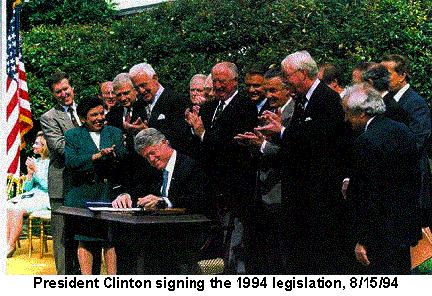 SSA returned full-circle to its place of origin in the
federal hierarchy when the President signed the SSA Independence
and Program Improvements Act of 1994 into law on August 15, 1994.
The law took effect on March 31, 1995 to allow sufficient time for
the complex transitional preparations. The Act brought with
it a full complement of challenges, ranging from finding new headquarters
space in Washington, to recruiting executives and fully staffing
the new offices of the General Counsel and the Inspector General.
There were also the complex issues of interpreting the Independent
Agency legislation, and learning how to operate without the cushion
of HHS. The greatest challenge of being independent was the
issue of the Agency’s programmatic responsibilities. As an
arm of HHS, SSA’s role was one of day-to-day delivery of services.
As an Independent Agency, SSA now had a fundamental responsibility
to help shape its programs, educate the public about Social Security,
and plan for the long-term future. The return to Independent
Agency status had several major impacts on SSA.
SSA returned full-circle to its place of origin in the
federal hierarchy when the President signed the SSA Independence
and Program Improvements Act of 1994 into law on August 15, 1994.
The law took effect on March 31, 1995 to allow sufficient time for
the complex transitional preparations. The Act brought with
it a full complement of challenges, ranging from finding new headquarters
space in Washington, to recruiting executives and fully staffing
the new offices of the General Counsel and the Inspector General.
There were also the complex issues of interpreting the Independent
Agency legislation, and learning how to operate without the cushion
of HHS. The greatest challenge of being independent was the
issue of the Agency’s programmatic responsibilities. As an
arm of HHS, SSA’s role was one of day-to-day delivery of services.
As an Independent Agency, SSA now had a fundamental responsibility
to help shape its programs, educate the public about Social Security,
and plan for the long-term future. The return to Independent
Agency status had several major impacts on SSA.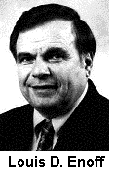 Following
the departure of Commissioner Gwendolyn S. King in October 1992,
Mr. Enoff, SSA’s Principal Deputy Commissioner, was named Acting
Commissioner. Mr. Enoff would serve as an Acting Commissioner
from October 1, 1992 to July 18, 1993, including the first seven
months of the Clinton Administration. During his tenure as
the head of SSA, he functioned principally as a “chief operating
officer,” running the day-to-day business of SSA. In his acting
capacity, he was not expected to assert a strong Capitol Hill presence
or make major policy changes at SSA, while waiting for the President’s
nominee for Commissioner.
Following
the departure of Commissioner Gwendolyn S. King in October 1992,
Mr. Enoff, SSA’s Principal Deputy Commissioner, was named Acting
Commissioner. Mr. Enoff would serve as an Acting Commissioner
from October 1, 1992 to July 18, 1993, including the first seven
months of the Clinton Administration. During his tenure as
the head of SSA, he functioned principally as a “chief operating
officer,” running the day-to-day business of SSA. In his acting
capacity, he was not expected to assert a strong Capitol Hill presence
or make major policy changes at SSA, while waiting for the President’s
nominee for Commissioner. 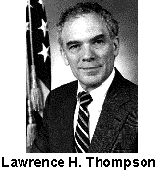 Health
and Human Services (HHS) Secretary, Donna Shalala, appointed Lawrence
H. Thompson as Acting Commissioner and Principal Deputy Commissioner
on July 19, 1993. Dr. Thompson was a career official at the
General Accounting Office where he worked as Chief Economist and
Assistant Comptroller for Human Resources programs. He headed
SSA for three months, until Commissioner Chater’s confirmation was
completed. Dr. Thompson left SSA in December 1995 to become
a Fellow at the Urban Institute.
Health
and Human Services (HHS) Secretary, Donna Shalala, appointed Lawrence
H. Thompson as Acting Commissioner and Principal Deputy Commissioner
on July 19, 1993. Dr. Thompson was a career official at the
General Accounting Office where he worked as Chief Economist and
Assistant Comptroller for Human Resources programs. He headed
SSA for three months, until Commissioner Chater’s confirmation was
completed. Dr. Thompson left SSA in December 1995 to become
a Fellow at the Urban Institute.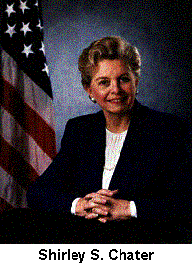 Shirley Sears Chater became Commissioner of
Social Security on October 8, 1993. Commissioner Chater brought
a lifetime of leadership and public service to this position.
She came to SSA from Texas Women’s University, where she served
as President from 1986 to 1993.
Shirley Sears Chater became Commissioner of
Social Security on October 8, 1993. Commissioner Chater brought
a lifetime of leadership and public service to this position.
She came to SSA from Texas Women’s University, where she served
as President from 1986 to 1993.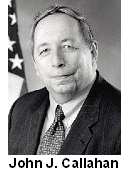 Following
Commissioner Chater’s resignation, President Clinton named John
J. Callahan, who was at the time serving as Assistant Secretary
for Management and Budget at HHS, Acting Commissioner of Social
Security.
Following
Commissioner Chater’s resignation, President Clinton named John
J. Callahan, who was at the time serving as Assistant Secretary
for Management and Budget at HHS, Acting Commissioner of Social
Security. 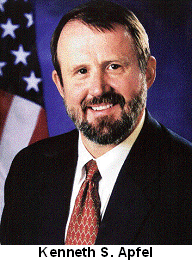 Kenneth
S. Apfel was sworn-in as Commissioner of Social Security on September
29, 1997. Commissioner Apfel had the honor of becoming the
first confirmed Commissioner of Social Security since it became
an Independent Agency in March of 1995. He brought extensive
leadership and public service experience to a position that has
been frequently described as one of the most complex and challenging
in the Federal Government.
Kenneth
S. Apfel was sworn-in as Commissioner of Social Security on September
29, 1997. Commissioner Apfel had the honor of becoming the
first confirmed Commissioner of Social Security since it became
an Independent Agency in March of 1995. He brought extensive
leadership and public service experience to a position that has
been frequently described as one of the most complex and challenging
in the Federal Government.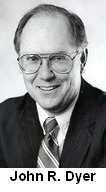
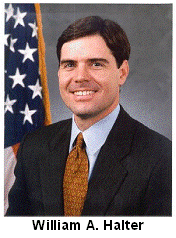 William A. Halter was nominated by President Clinton on
October 1, 1999 and confirmed by the Senate on November 10, 1999,
to become the first confirmed Deputy Commissioner of the independent
SSA. He served as the Agency’s Chief Operating Officer, providing
executive leadership and direction to SSA’s 65,000 employees located
in 1,500 offices nationwide.
William A. Halter was nominated by President Clinton on
October 1, 1999 and confirmed by the Senate on November 10, 1999,
to become the first confirmed Deputy Commissioner of the independent
SSA. He served as the Agency’s Chief Operating Officer, providing
executive leadership and direction to SSA’s 65,000 employees located
in 1,500 offices nationwide.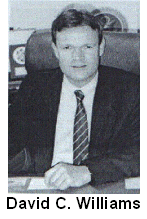 President Clinton nominated
David C. Williams to be SSA’s first IG on August 10, 1995.
At the time of his nomination, Mr. Williams was serving as the IG
of the U.S. Nuclear Regulatory Commission. On December 22,
1995, the Senate confirmed Mr. Williams’ nomination. He immediately
acted to implement an aggressive hiring program to build the investigative
strength of this new OIG. Experienced investigators from other
Federal law enforcement agencies became integral members of OIG.
President Clinton nominated
David C. Williams to be SSA’s first IG on August 10, 1995.
At the time of his nomination, Mr. Williams was serving as the IG
of the U.S. Nuclear Regulatory Commission. On December 22,
1995, the Senate confirmed Mr. Williams’ nomination. He immediately
acted to implement an aggressive hiring program to build the investigative
strength of this new OIG. Experienced investigators from other
Federal law enforcement agencies became integral members of OIG.
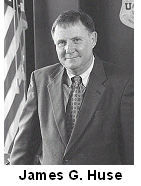 James
G. Huse, Jr. was nominated by President Clinton on July 29, 1999,
to serve as SSA’s second IG. The Senate confirmed him in November
1999. Mr. Huse also held the positions of Deputy IG and Assistant
IG for Investigations at SSA. Prior to his SSA/OIG appointments,
Mr. Huse was a Special Agent in the Secret Service for 25 years,
rising to the position of Assistant Director. In 1995,
he received a Special Award from the Secretary of the Treasury for
his role as the Secret Service official in charge of the White House
Security Review.
James
G. Huse, Jr. was nominated by President Clinton on July 29, 1999,
to serve as SSA’s second IG. The Senate confirmed him in November
1999. Mr. Huse also held the positions of Deputy IG and Assistant
IG for Investigations at SSA. Prior to his SSA/OIG appointments,
Mr. Huse was a Special Agent in the Secret Service for 25 years,
rising to the position of Assistant Director. In 1995,
he received a Special Award from the Secretary of the Treasury for
his role as the Secret Service official in charge of the White House
Security Review. Commissioner Chater’s selection of a Chief of Staff strengthened
the Office of the Commissioner. In September 1994, Commissioner
Chater appointed Brian Coyne as SSA’s first Chief of Staff.
As Commissioner Chater conceived the position, the Chief of Staff’s
role was to support the Commissioner in the day-to-day running of
the Agency and to coordinate the decision-making process within
the Agency. In addition, the Chief of Staff was to act as
liaison between the Agency and other organizations, both within
and outside of the government. Mr. Coyne was known throughout the
Agency as a strong and accessible Chief of Staff. Immediately
prior to accepting the Chief of Staff position, Mr. Coyne was Deputy
Chief of Staff to the Governor of Rhode Island.
Commissioner Chater’s selection of a Chief of Staff strengthened
the Office of the Commissioner. In September 1994, Commissioner
Chater appointed Brian Coyne as SSA’s first Chief of Staff.
As Commissioner Chater conceived the position, the Chief of Staff’s
role was to support the Commissioner in the day-to-day running of
the Agency and to coordinate the decision-making process within
the Agency. In addition, the Chief of Staff was to act as
liaison between the Agency and other organizations, both within
and outside of the government. Mr. Coyne was known throughout the
Agency as a strong and accessible Chief of Staff. Immediately
prior to accepting the Chief of Staff position, Mr. Coyne was Deputy
Chief of Staff to the Governor of Rhode Island.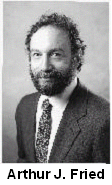
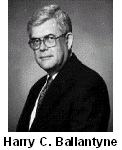
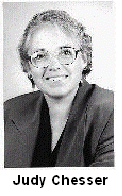
 was
selected to be the Assistant Deputy Commissioner for Systems.
He is credited for first alerting SSA to the Y2K problem as early
as 1989.
was
selected to be the Assistant Deputy Commissioner for Systems.
He is credited for first alerting SSA to the Y2K problem as early
as 1989.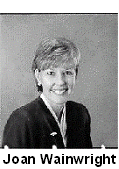 Commissioner Chater elevated
the office to Deputy Commissioner level and selected Joan E. Wainwright
as Deputy Commissioner for Communications in June 1996. Ms.
Wainwright served in a variety of positions in the public relations
field before coming to SSA in 1994 as the Associate Commissioner
for Public Affairs.
Commissioner Chater elevated
the office to Deputy Commissioner level and selected Joan E. Wainwright
as Deputy Commissioner for Communications in June 1996. Ms.
Wainwright served in a variety of positions in the public relations
field before coming to SSA in 1994 as the Associate Commissioner
for Public Affairs.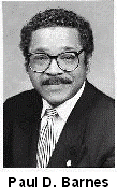 Paul D. Barnes, a career
employee, has served as the Deputy Commissioner for Human Resources
since March 31, 1997. He is responsible for providing executive
leadership and direction for the Agency’s human resource programs
for its 65,000 employees.
Paul D. Barnes, a career
employee, has served as the Deputy Commissioner for Human Resources
since March 31, 1997. He is responsible for providing executive
leadership and direction for the Agency’s human resource programs
for its 65,000 employees. Commissioner Apfel named Carolyn
W. Colvin as the Deputy Commissioner for Operations in April 1998.
She manages SSA’s workload operations components responsible for
the delivery of services to the public. Ms. Colvin directs
the activities of nearly 50,000 employees located in headquarters,
regional offices, field offices, teleservice centers and processing
centers.
Commissioner Apfel named Carolyn
W. Colvin as the Deputy Commissioner for Operations in April 1998.
She manages SSA’s workload operations components responsible for
the delivery of services to the public. Ms. Colvin directs
the activities of nearly 50,000 employees located in headquarters,
regional offices, field offices, teleservice centers and processing
centers.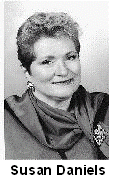 Susan M. Daniels was selected as Deputy Commissioner
for Disability and Income Security Programs, effective April 1998.
She is responsible for the direction and policy governing the OASDI
programs. She leads the program policy and management staff
at SSA headquarters, Office of Hearings and Appeals and a disability
determination process in 54 State agencies with an administrative
budget of more than $1 billion with over 11,000 employees.
Dr. Daniels joined the Agency in August 1994, as Associate Commissioner
for Disability.
Susan M. Daniels was selected as Deputy Commissioner
for Disability and Income Security Programs, effective April 1998.
She is responsible for the direction and policy governing the OASDI
programs. She leads the program policy and management staff
at SSA headquarters, Office of Hearings and Appeals and a disability
determination process in 54 State agencies with an administrative
budget of more than $1 billion with over 11,000 employees.
Dr. Daniels joined the Agency in August 1994, as Associate Commissioner
for Disability.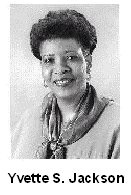
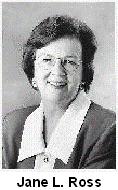 Soon after his appointment, Commissioner Apfel stated
that one of the pressing challenges facing the Agency was improving
its policy-making process. To this end, the Commissioner selected
Dr. Jane L. Ross as Deputy Commissioner for Policy in April 1998.
The Office of Policy maintains offices in Washington and Baltimore.
Soon after his appointment, Commissioner Apfel stated
that one of the pressing challenges facing the Agency was improving
its policy-making process. To this end, the Commissioner selected
Dr. Jane L. Ross as Deputy Commissioner for Policy in April 1998.
The Office of Policy maintains offices in Washington and Baltimore.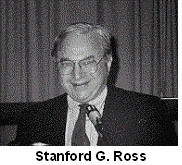 He is an expert in Social Security and Federal taxation issues.
Mr. Ross is a Director, former President, and founding member of
the National Academy of Social Insurance, and serves as Chair of
its International Understanding Committee. In addition, he
served as a public trustee of the Social Security and Medicare trust
funds during the Bush and Clinton Administrations.
He is an expert in Social Security and Federal taxation issues.
Mr. Ross is a Director, former President, and founding member of
the National Academy of Social Insurance, and serves as Chair of
its International Understanding Committee. In addition, he
served as a public trustee of the Social Security and Medicare trust
funds during the Bush and Clinton Administrations.